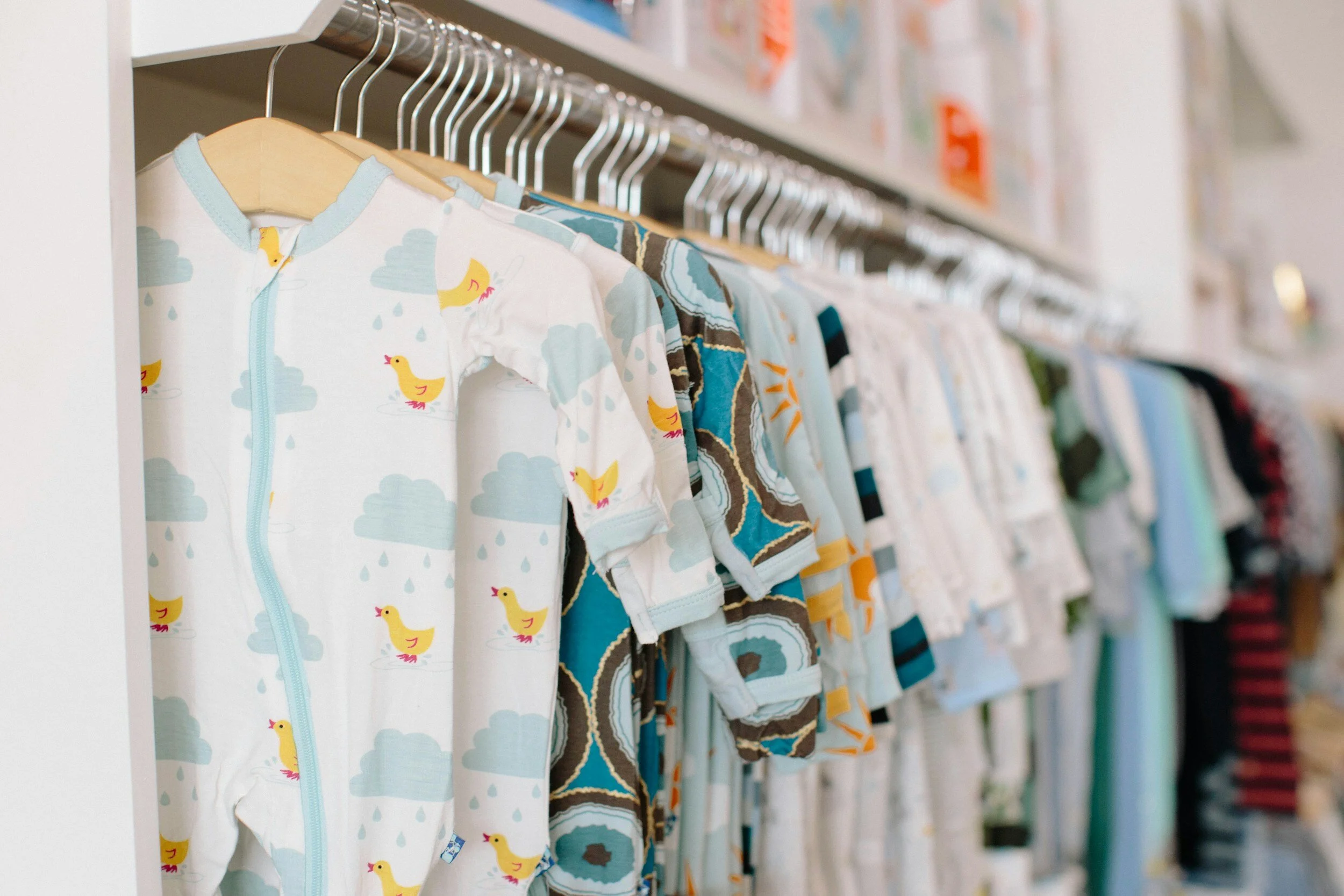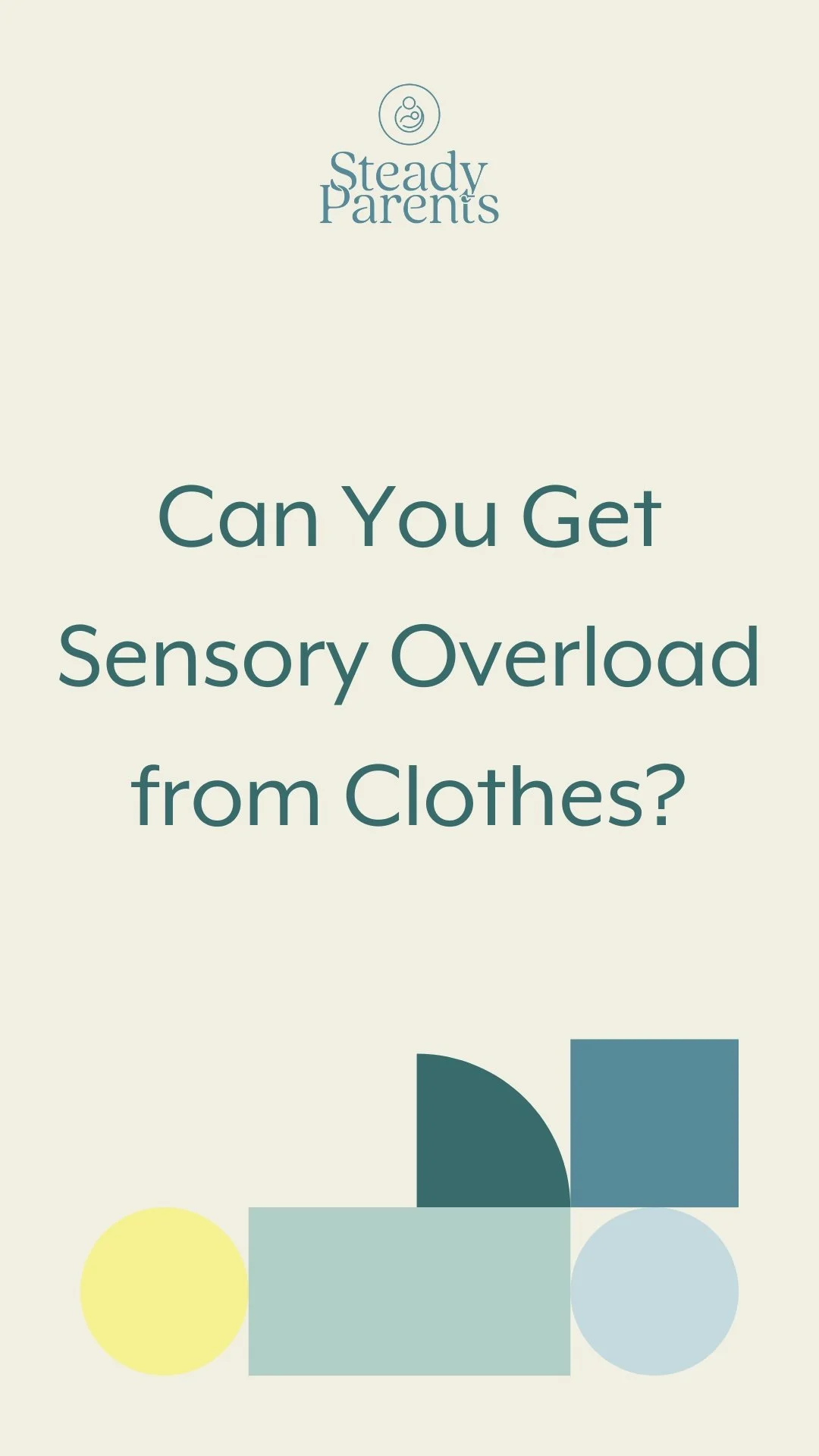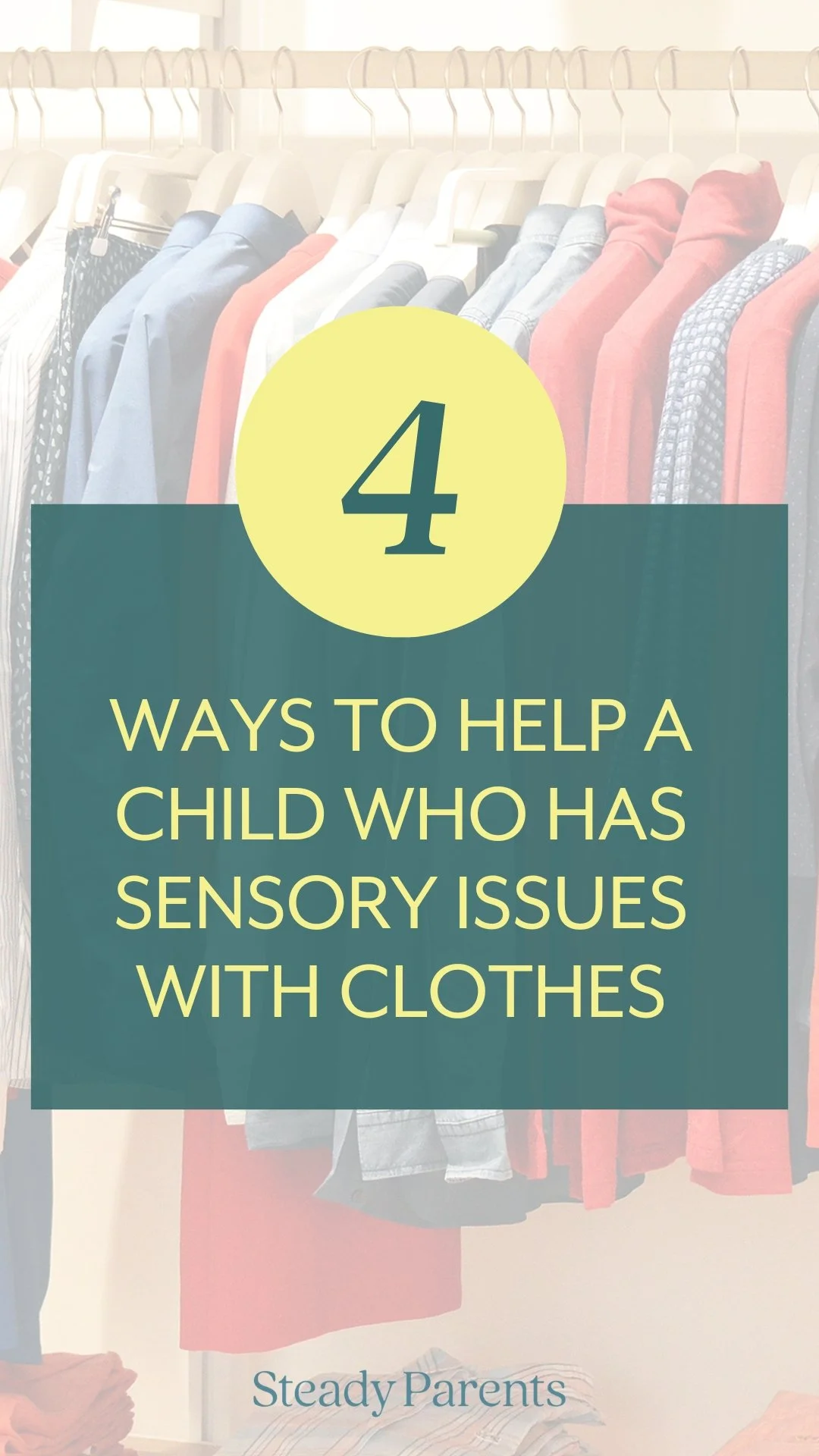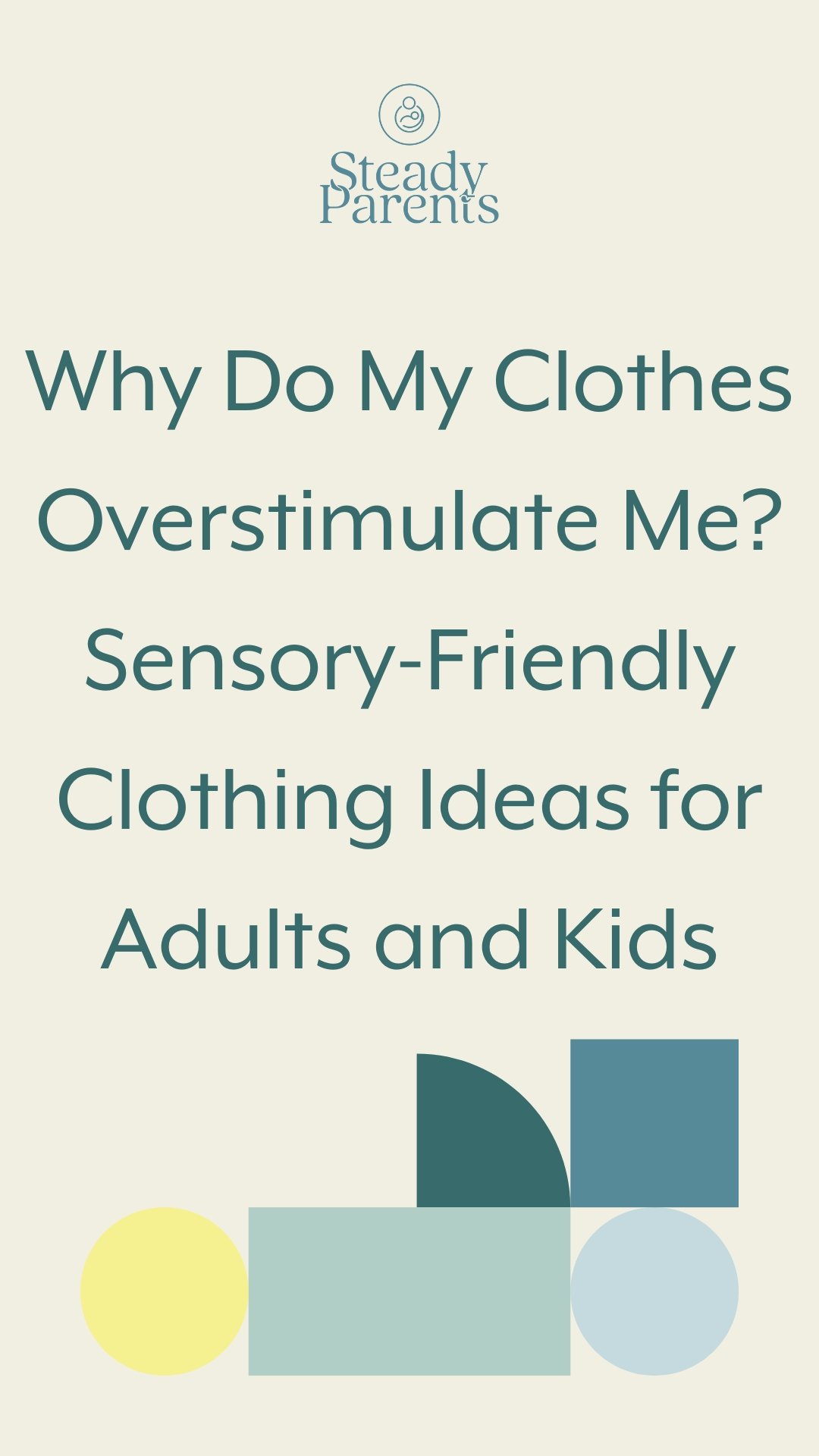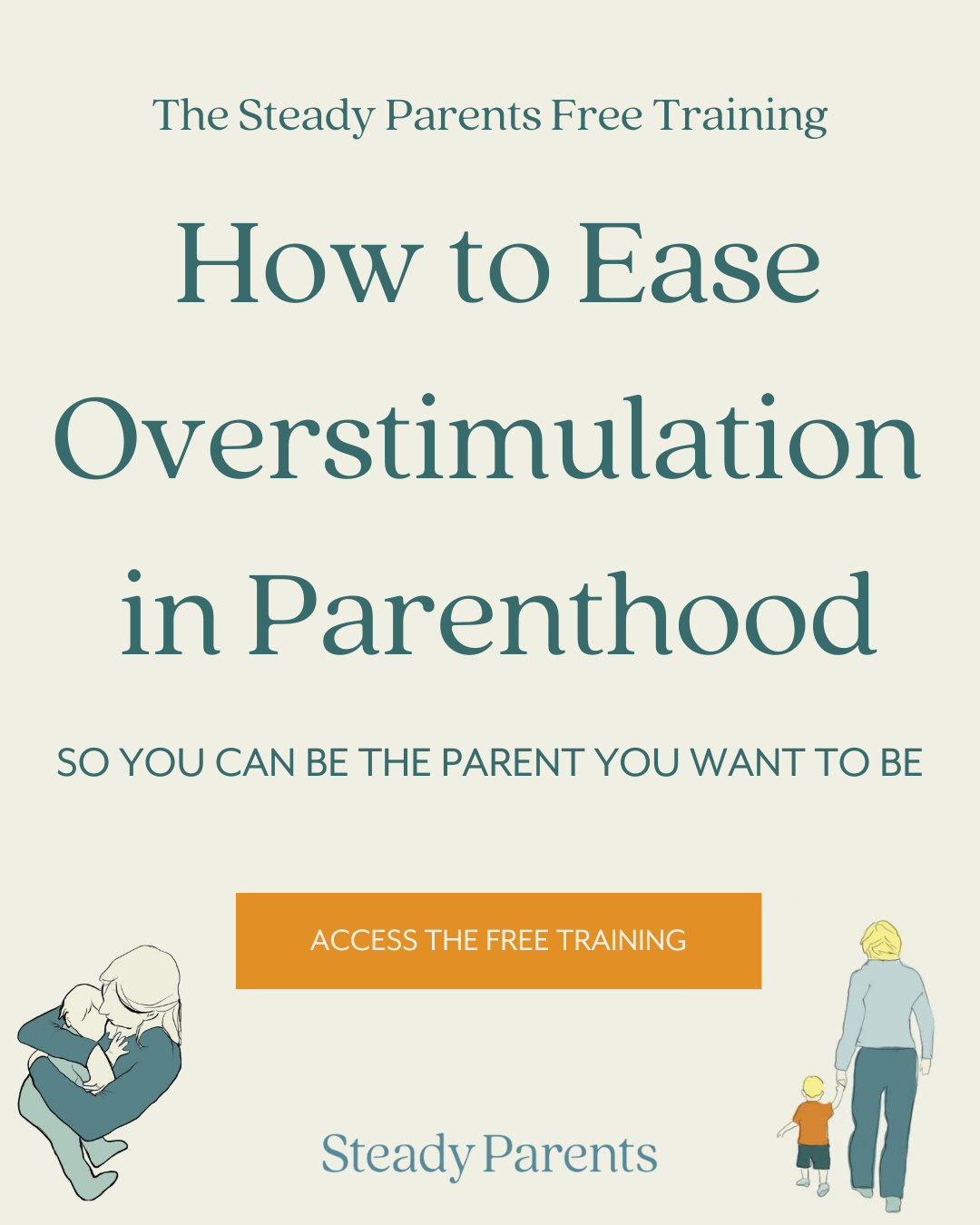Why Do My Clothes Overstimulate Me? Sensory-Friendly Clothing Ideas for Adults and Kids
A common struggle experienced by both children and adults is sensory overload triggered by clothing. Recently, I shared a story on my Instagram account involving me having to cut the tags out of my 5-year old son’s t-shirts.
He was having an emotional time and was gearing up for a big day at school. I could see him pulling at his shirt and scratching his neck, getting more and more agitated by the minute.
I could have thought “well he’s just being dramatic. He can deal with it.” But, knowing all that I know about sensory processing, I offered to cut the tags out of his shirt for him.
You see, his nervous system was already going through a lot. He was anxious in anticipation for the day ahead and the tags were just one more thing adding to his overstimulation.
I know my son is not the only one with clothing-related sensory issues. Maybe your child gets annoyed by the seams in their socks. Or will only wear a certain type of clip in their hair.
“I could have thought “well he’s just being dramatic. He can deal with it.” But, knowing all that I know about sensory processing, I offered to cut the tags out of his shirt for him. ”
Why does some clothing have itchy labels?
What I learned while researching for this blog post is that the U.S. Federal Trade Commission actually requires companies to have labels on their products, identifying their country of origin and how to care for the garment.
Nowadays, technology is improving that allows companies to print this information directly on the clothing, instead of using itchy tags, but not all companies have adapted this practice.
So if you or your child have similar clothing-related sensory issues, continue reading to uncover the reasons behind them, and learn practical solutions and sensory-friendly clothing ideas for both adults and children.
Can you get sensory overload from clothes?
The short answer is yes, both children and adults can indeed experience sensory overload from clothing. Sensory processing disorders amplify sensitivity to various stimuli, including textures, seams, tags, and the pressure exerted by clothing on the body.
For some, the mere sensation of fabric against the skin can be overwhelming, leading to discomfort, anxiety, and, in severe cases, meltdowns or shutdowns. For parents, this might add to that “touched-out” feeling.
Sensory overload occurs when the brain receives more sensory input than it can process effectively. For parents and kids with sensory processing disorders, everyday activities like getting dressed become potential sources of distress.
The sensory information from clothing can be misinterpreted by the brain, triggering emotional and physiological responses that contribute to the overload.
Understanding that clothing can play a significant role in sensory overload is the first step towards addressing this issue. Parents, caregivers, and individuals themselves can benefit from recognizing the signs and exploring solutions to create a more comfortable clothing experience, preventing the problem before it becomes a full-blown disaster.
Why do I have sensory issues with clothing?
Sensory issues with clothing can stem from various factors, primarily rooted in an individual's unique sensory processing profile. Hypersensitivity, where an individual is overly sensitive to sensory stimuli, or hyposensitivity, where there is a diminished response to sensory input, can both contribute to clothing-related challenges.
The tactile system, responsible for processing touch and pressure, plays a crucial role in clothing-related sensory issues. Individuals may find certain fabrics intolerable, seams too pronounced, or the pressure from clothing too intense.
Conditions such as autism spectrum disorder (ASD) or attention deficit hyperactivity disorder (ADHD) can heighten susceptibility to clothing-related sensory challenges.
Additionally, sensory sensitivities can be influenced by factors such as anxiety, environmental stressors, or even past negative experiences related to clothing.
Perhaps, for your child, the day they wore their itchy Christmas sweater with the really long, annoying tag, was the day they had to take dreaded family photos and felt really overwhelmed and overstimulated at that time. Though they may not be able to fully connect the dots, these memories can stick in our children’s minds and be triggered by similar experiences with clothing.
Recognizing and understanding these contributing factors is essential in devising effective strategies to address sensory issues with clothing.
How do you help a child who has sensory issues with clothes?
As a coach and occupational therapist specializing in sensory processing, supporting children with clothing-related sensory issues involves implementing strategies that cater to their unique needs. Here are some practical tips:
Gradual Exposure
Introduce new clothing items gradually, allowing the child to become familiar with different textures and sensations over time. This gradual approach can help desensitize the child to potential triggers.
Seamless and Tagless Options
Opt for clothing without prominent seams and tags to minimize potential irritants. The market now offers a variety of seamless and tagless clothing options designed specifically for individuals with sensory sensitivities.
Offer Choices
Empower the child by allowing them to have a say in the types of clothing they wear. Providing choices not only fosters a sense of autonomy but also enables them to select items that feel comfortable and non-intrusive.
And if you can easily fix a meltdown by cutting the tags out of their shirt like I did, by all means, do it!
Sensory Breaks
Incorporate sensory breaks throughout the day, providing opportunities for the child to remove or adjust their clothing when needed. These breaks can serve as a reset, allowing the child to manage sensory input more effectively.
Do you have a toddler who comes home from daycare and immediately wants to strip down to his diaper? Yep, it could be that he just needs a chance to decompress from all of the tactile stimulation he received throughout the day.
Remember, each child is unique, and it may require some trial and error to identify the most effective strategies for a particular individual. Regular communication with parents and caregivers is crucial to adapting and refining approaches based on the child's evolving needs.
“It’s important to note that preferences for clothing materials can vary among individuals. Some may prefer the smoothness of silk, while others find comfort in the coziness of fleece. ”
What is the best clothing material for sensory issues?
Choosing the right clothing material is a critical consideration for individuals with sensory processing disorders. Soft, breathable fabrics like cotton, bamboo, or moisture-wicking materials are often well-tolerated.
The absence of irritating textures can contribute to a more comfortable sensory experience.
In recent years, there has been a growing awareness of the need for sensory-friendly clothing, leading to the development of specialized garments designed with sensory sensitivities in mind. These clothing items typically feature seamless designs, tagless labels, and soft, stretchy fabrics to minimize potential irritants.
It's important to note that preferences for clothing materials can vary among individuals. Some may prefer the smoothness of silk, while others find comfort in the coziness of fleece.
Experimenting with different materials and paying attention to the individual's responses can help identify the most suitable options.
Clothing Sensitivity Treatment: Do kids grow out of sensory clothing issues?
The trajectory of sensory clothing issues varies from one individual to another. While some children may outgrow specific sensory challenges related to clothing, others may continue to face them into adolescence and adulthood.
The key lies in providing appropriate support, understanding, and interventions tailored to the individual's needs. Know that your child is not trying to be difficult about their clothes, but that they may genuinely have a hypersensitivity to that kind of tactile stimulation.
Early intervention and targeted sensory activities can significantly impact a child's ability to cope with and adapt to sensory stimuli. As children develop and mature, their sensory processing abilities may improve, leading to a reduction in sensitivities.
However, it's crucial to acknowledge that sensory processing is a complex and individualized aspect of human experience, and outcomes can differ widely.
For those who continue to experience sensory clothing issues into adulthood, the focus shifts towards developing effective coping mechanisms.
Occupational therapy, coaching or counseling, and support groups can be valuable resources in navigating these challenges. Additionally, the availability of sensory-friendly clothing options for adults has expanded, offering a range of choices to accommodate diverse sensory preferences.
Conclusion
In conclusion, understanding and addressing sensory issues related to clothing are paramount for parents, caregivers, and individuals navigating the complexities of sensory processing disorders.
By recognizing the signs of sensory overload, exploring the reasons behind clothing-related challenges, and implementing practical strategies, it becomes possible to create a supportive environment for both adults and children.
Pin This for Later:


